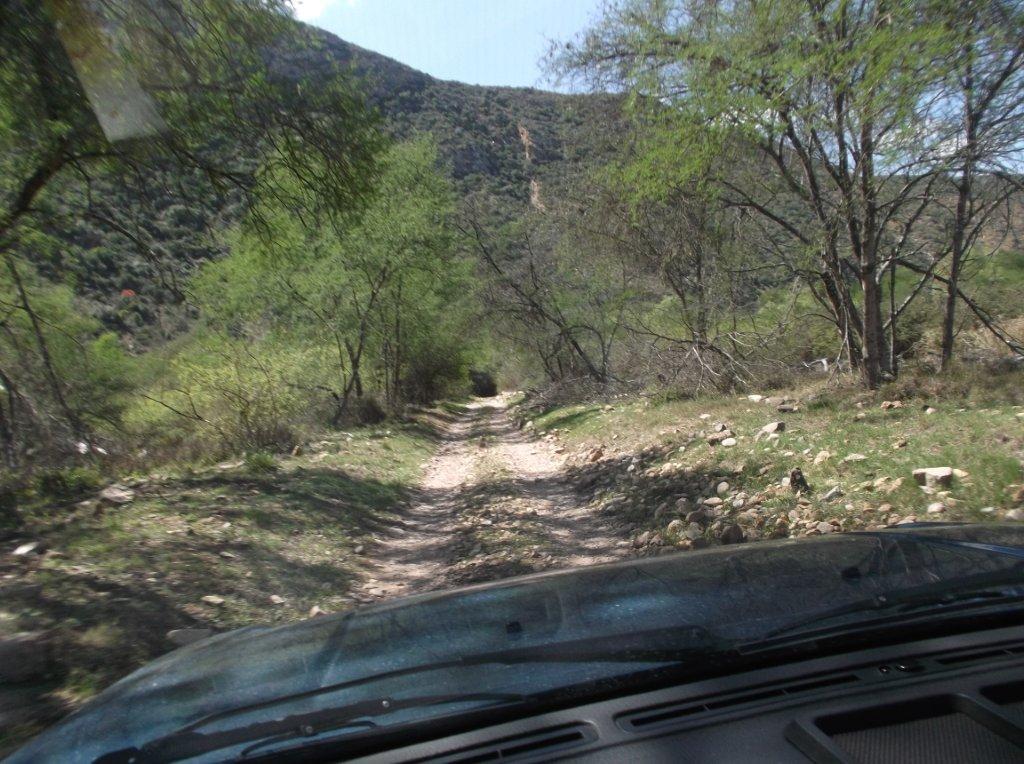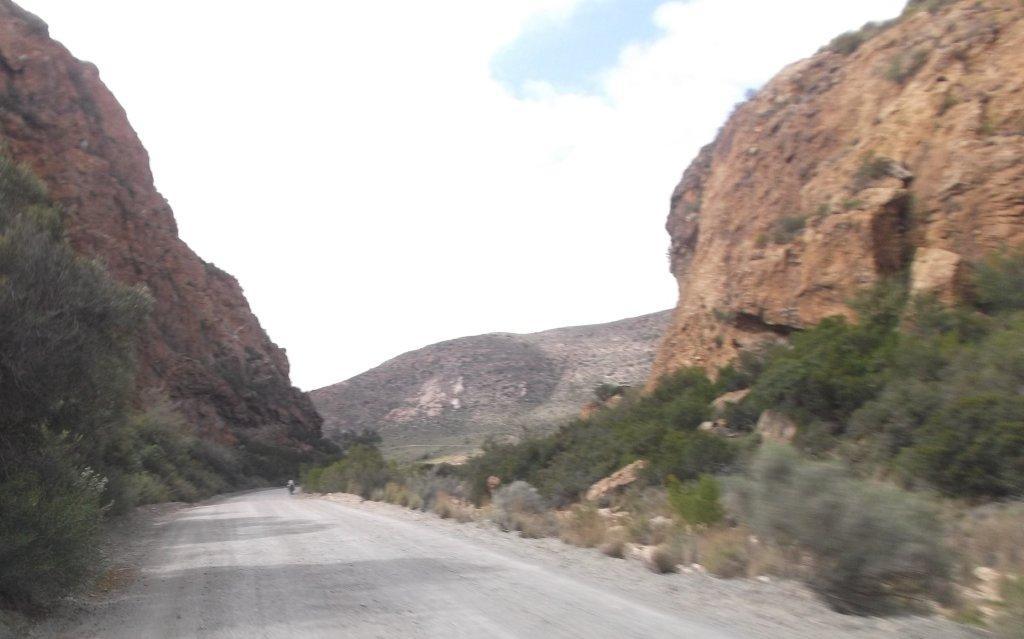
In September, my wife and I and two long-time friends went on a most enjoyable (and quite adventurous, as we are all in our 80s) road tour to inland places around the provincial boundary between the Eastern and Western Cape, with our friend Barrie behind the wheel of his Range Rover for the whole trip. Returning home from Willowmore, we spent almost the whole day traversing the 130 kms of the Baviaanskloof (R332), which was quite an experience. Initially we found the route to comprise a wide gravel road in good condition (see photo below) but, when we arrived at the police post controlling the central section of the route - which has been declared a World Heritage Site - the road shrank to a single poorly-maintained track with limited space for passing oncoming traffic and flooded at one point (see main photo). Once through this WHS section, the standard of the road reverted to almost the quality of the first section.
Wide road in good condition (Richard Tomlinson)
My questions are:
- Is this the normal procedure with a declared WHS, or is this just an excuse for the Eastern Cape Roads authority to leave the road in this section to its own devices?
- I am aware with historic buildings which have the WHS qualification that it is quite normal for them to be repaired and maintained in good condition, for the safety of visitors, but why does this not apply to a public road through a WHS wilderness area?
Richard Tomlinson - December 2016
Disclaimer: Any views expressed by individuals and organisations are their own and do not in any way represent the views of The Heritage Portal.

